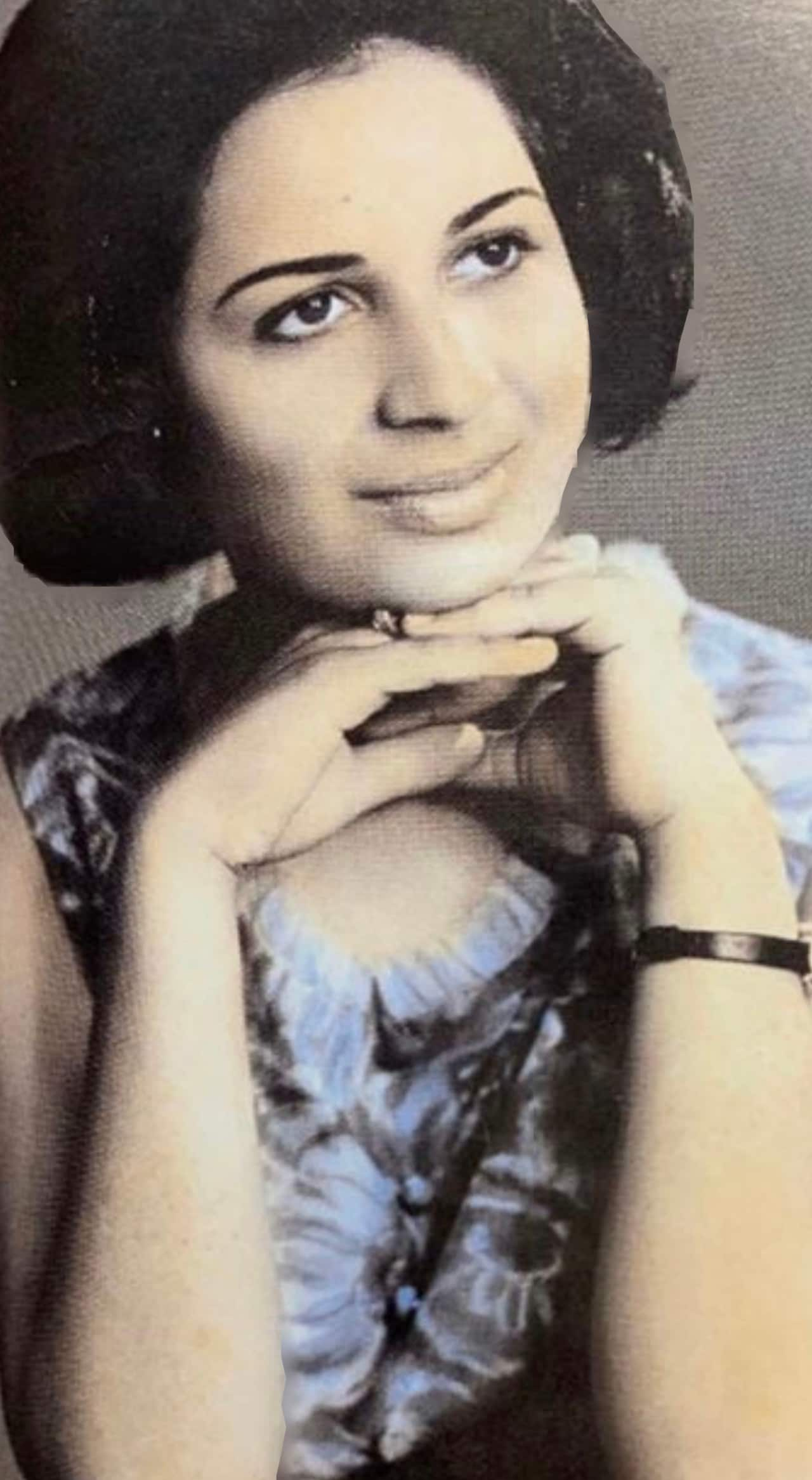What’s in a photo? For Androula Christodoulou, much more than a snapshot of her youth.
Back in 1968, at the age of 18, she migrated to Australia from today's occupied territories of northern Cyprus. Six years later, her parents were forced to flee their family home – at the onset of a conflict that's still continuing – thinking they would be back soon.
Among the belongings and memorabilia left behind, was a photo of Ms Christodoulou as a teen, that she would reunite with almost half a century later, thanks to social media and a two-decade-long pursuit by a British photographer.
Highlights
- After the Turkish invasion in 1974, Cyprus had many of its residents forcibly displaced
- The parents of Melbourne woman Androula Christodoulou left behind everything at their home, including a framed portrait of Ms Christodoulou
- 46 years later, a British man who made it his mission to find the woman in the photo, finally succeeded in getting it to its rightful owner
Ms Christodoulou’s homeland, following the 1974 Turkish invasion at the back of a coup aided by Greece. Speaking to SBS Greek, she vividly recounts the day her parents had to run away from their home in Lapithos, a town in northern Cyprus which is currently under Turkish occupation.
Speaking to SBS Greek, she vividly recounts the day her parents had to run away from their home in Lapithos, a town in northern Cyprus which is currently under Turkish occupation.

The Greek and Cypriot Republic flags are visible across the separating green line from the Turkish and Turkish Cypriot flags in Nicosia, the capital of Cyprus. Source: Diego Cupolo/NurPhoto via Getty Images
“They went to Limassol with nothing on them. My mother was angry at my grandparents who decided to stay behind," she recalls.
"She had just put out some freshly baked bread and didn’t have the time to take anything from the house with her. They started running with soldiers behind giving orders for the troops to keep moving. My dad knew some Turkish so he was telling my mum ‘run, run, or the Turks will catch us’.”
An unusual quest passes the test of time
In 2001, Andy Konstantinou, a British photographer of Greek Cypriot heritage visited Lapithos – his mother’s village – during a trip to the island for a photoshoot.
At the time, strict travel restrictions in divided Cyprus were still in effect. The last major round of negotiations between the two sides for a peace deal took place two years later in 2003, allowing for 200,000 people to cross the so-called ‘Green Line’, a UN buffer zone separating the island.
Mr Konstantinou was able to pass through roadblocks after being granted access to take photos, thanks to his British passport.
His stop at Lapithos was a personal initiative to see the place where his mother once lived.
While he was searching for another relative's former family home in Lapithos, Mr Konstantinou was invited to a private residence by a hospitable Turkish Cypriot woman who offered him and his team coffee and sweets.
“The lady then told him ‘I have a photo to show you’ and she brought it out asking Andy if he knew who the girl (in the photo) was, but he, of course, didn't know,” Ms Christodoulou recalls the events as described to her by Mr Konstantinou.
After leaving the house, the photographer felt the urge to go back and ask the woman for the image in order to locate its rightful owner. “The picture had been at my parents’ house since I left in 1968, they had it framed on the wall. You could see it passing by outside the house,” Ms Christodoulou says.
“The picture had been at my parents’ house since I left in 1968, they had it framed on the wall. You could see it passing by outside the house,” Ms Christodoulou says.

The photo depicting Androula Christodoulou Source: Supplied
Mr Konstantinou was unaware of the identity of the girl in the then over three-decades-old black and white photo. But he was determined to find her.
Crossing to the Greek Cypriot side of the island, he pursued his quest passionately, reaching out to community groups and local media to find the woman in the photo.
Upon his return to the UK, he continued his efforts to locate the woman. He published the photo in magazines and papers, hoping that a member of the Greek Cypriot diaspora there would identify the woman. But his efforts did not pay off.
19 years after the last attempt, Mr Konstantinou made another one, this time posting the photo on Facebook group for people hailing from Lapithos and their descendants. This was only a few weeks ago, and this time, his two-decade-long pursuit would successfully end. “When my daughters saw it on Facebook they immediately recognised that it was me. They said 'this is our mother!'" Ms Christodoulou exclaims while expressing gratitude for Mr Konstantinou, the man who made it his personal mission to find her.
“When my daughters saw it on Facebook they immediately recognised that it was me. They said 'this is our mother!'" Ms Christodoulou exclaims while expressing gratitude for Mr Konstantinou, the man who made it his personal mission to find her.

Androula Christodoulou with her husband and family are based in Melbourne Source: Supplied
The ‘reunion’ brings outpouring of emotions
Behind the photo’s cross-border story, lie the nuances of one of the world’s most protracted conflicts. Leaders from both the Greek Cypriot and Turkish Cypriot sides have long agreed in principle to find a solution for the island’s reunification. But the reality of the task remains complex with issues of ethnic tensions, land ownership and politics - all intertwined in the dispute.
Leaders from both the Greek Cypriot and Turkish Cypriot sides have long agreed in principle to find a solution for the island’s reunification. But the reality of the task remains complex with issues of ethnic tensions, land ownership and politics - all intertwined in the dispute.

A border crossing on the Green Line cutting through central Nicosia and patrolled by the UN Peacekeeping Force in Cyprus (UNFICYP). Source: Valery Sharifulin\TASS via Getty Images
, the reunification of Ms Christodoulou with the photo has brought her some peace of mind evoking a sea of memories and feelings.
“I kept crying [when I saw it], mostly thinking about my parents.”
“It brought to mind all the wounds still open but also the happy times. “I’ve been to Cyprus many times and visited my house in Lapithos,” she says, describing the sight of dried lemon trees that she says was like a reminder of a past long gone.
“I’ve been to Cyprus many times and visited my house in Lapithos,” she says, describing the sight of dried lemon trees that she says was like a reminder of a past long gone.

Lapithos is renowned for its lemons and used to be the country's biggest producer. Photo taken in 1971 in Lapithos. Source: Jonathan Blair/Corbis via Getty Images
“The house looked nothing like how I knew it, the lemon trees were all dry.
“I thought it wouldn’t be possible for those trees to die out but they did and now everything is dry. I was just overwhelmed with emotion.”






